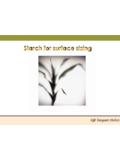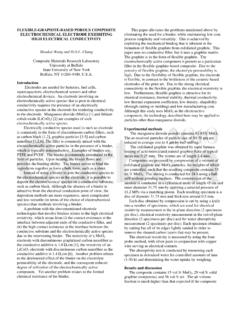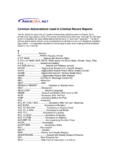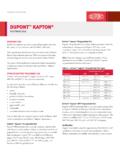Transcription of Basic Starch Technology - Tongaat Hulett
1 Basic Starch Technology Topics Basic Starch Technology Native Starch Structure of Amylose and Amylopectin Gelatinisation of Starch Retrogradation Native Starch The sugars (dextrose) produced during photosynthesis are converted to Starch and stored as a source of energy Native Starch Naturally occurring carbohydrate Found in seeds, stems and tubers Native Starch - Maize GLUTEN Starch FIBRE Starch AND P ROTEIN GERM Starch 68% Protein Oil 5% Fibre Ash 2% Soluble Sugars 10% Amylose Essentially a linear polymer. Illustrated as a straight chain although it is often helical. Amylose A well known attribute of amylose is the ability to form firm gel structures after cooking and subsequent cooling This is evident in starches such as maize, wheat, rice and high amylose starches from maize hybrids.
2 This gel formation is due to retrogradation or set back of the linear polymer Amylopectin Amylopectin This is a branched polymer that is the dominate polymer in most starches Its bush like structure slows retrogradation and gel formation is either prevented or delayed High amylopectin starches like waxy maize are non gelling and form pastes exhibiting a long, cohesive texture Amylose and Amylopectin Ratios Type of Starch Amylose % Amylopectin % Granule size ave Maize 26 74 Wheat 25 75 Rice 17 83 Potato 21 79 36 Cassava 17 83 Waxy Maize 1 99 High Amylose 70 30 Gelatinisation of Starch Occurs as granules vary from 5 30 microns Inert not soluble in water No adhesive power or binding capacity Birefringence under polarised light Gelatinisation of Starch Water 4:1 Temperature for Starch only 68 85 C Time 15 minutes Comparing different starches Granular size.
3 The larger granules swell faster and have a gelatinisation temperature 3oC lower than the smaller. Amylose: Amylopectin ratio: the higher the amylose, the higher the gelatinization temperature. Also determines the texture of cooked Starch . Amylose: Amylopectin molecular structure: The potato and tapioca have a molecular weight so much higher than that of maize that it actually makes it more difficult for the molecules to associate - affects degree of retrogradation Tracking Viscosity - Brabender Retrogradation / Setback 26% solids cooked maize Starch is opaque and short textured With time and decrease in temperature viscosity increases Setback reverse of gelatinisation - is a reaction that takes place when the amylose chains realign themselves.
4 Causing the liquid to gel and expel water from the polymer network - synerises Cloudiness at Low Concentration Gel at High Concentration CONTACT DETAILS FOR MORE INFORMATION PLEASE CONTACT NKULI KHANYEZA TECHNICAL SERVICES MANAGER 011 458 5000 @ Tongaat .com









